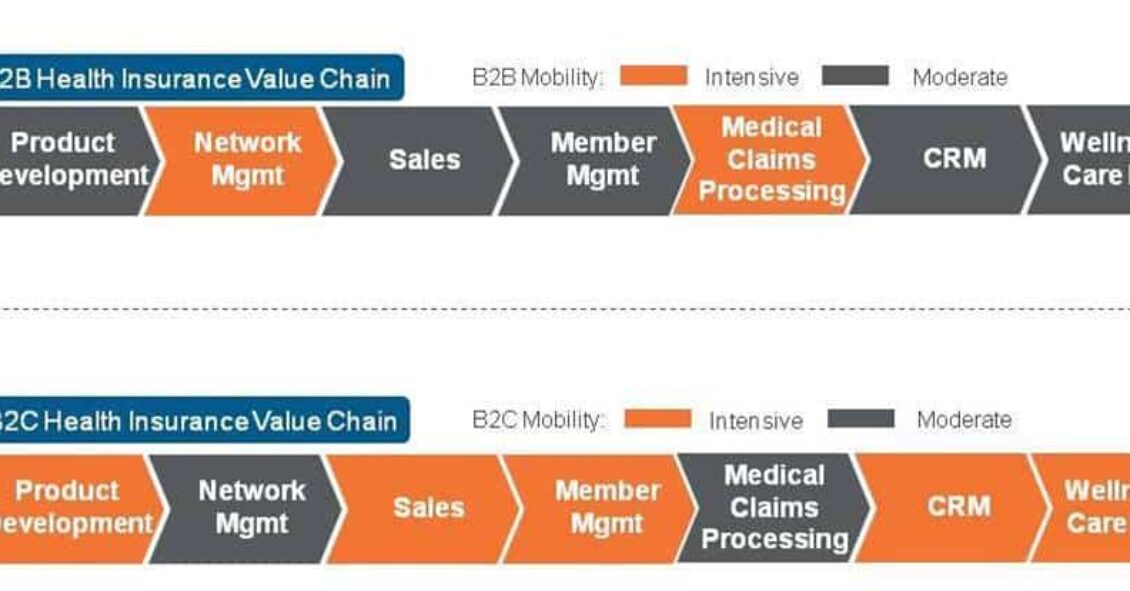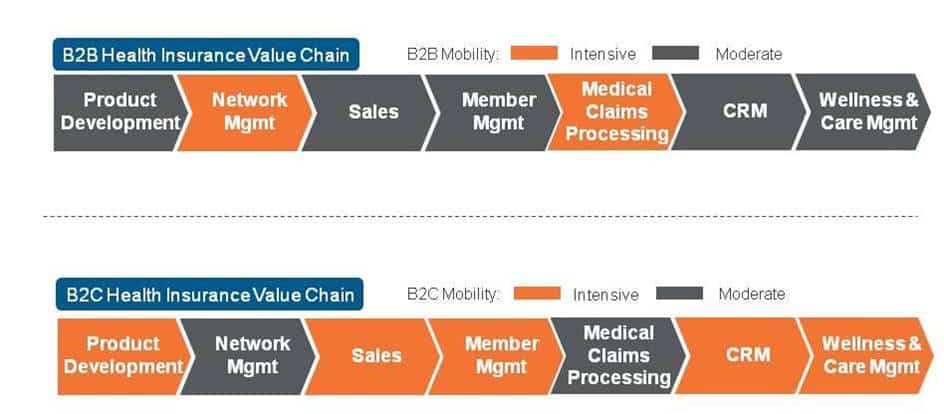
Mobility in the health insurance industry has been an extremely hot topic during the past several months; white papers on the subject abound, the media is hyping it, all major IT service providers have announced service offering expansions, and a multitude of high-tech startups are hoping to capitalize on the expected spike in spending. Despite all this activity and buzz, what is the actual potential of mobility for payers in the health insurance industry?
In fact, there are many opportunities to leverage mobility in both the business to business (B2B) and business to consumer (B2C) segments across the payer value chain.

There are efficiency gains from further minimizing paper-intensive processes, and time savings from capturing data real-time with built-in error-checking. Revenue growth potential by harnessing mobility’s advantages of immediacy, ubiquity and unique personal engagement to capture buyers and members attention and build brand loyalty. Wellness improvements through using the GPS/accelerometer and other features of mobile devices along with the power of social media. This has a double-edged benefit for payers; mobility-enhanced wellness can be most appealing to the younger and more-educated demographics which are the most profitable segments, and can move others to an improved and thus less costly health state.
Mobility presents great potential opportunities and gains for the healthcare payer industry. While there are inherent differences between the B2B and B2C segments across the healthcare value chain processes, those payers that leverage the right opportunities for their unique strategic growth plans stand to reap significant rewards.
To learn more, please read the Everest Group Executive Point of View: Health Insurance Mobility: Myriad B2B and B2C Opportunities for Payers Throughout the Value Chain.




